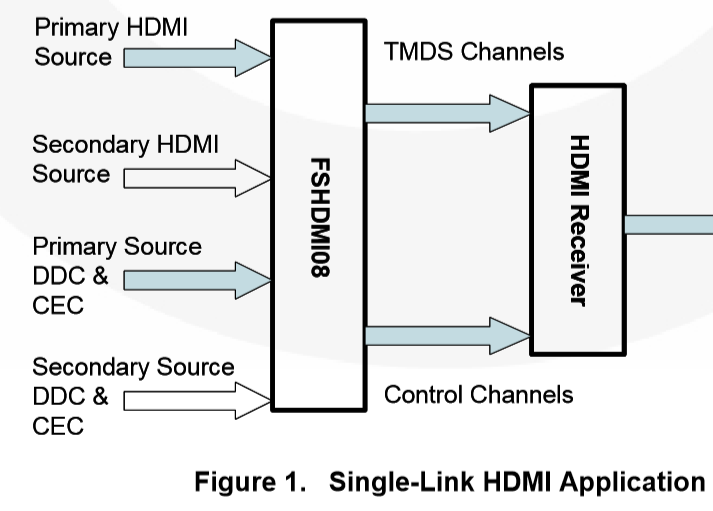Modify HDMI DPDT push button with an NPN to control with GPIO pin?
It will be quite easy to modify, though there are two distinct circuits you need to drive separately. You will need to remove the DPDT switch to get correct remote operation.
HDMI switches (with manual pushbutton selection) all use one of various HDMI multiplexers to change the TMDS/Clock and DDC/CEC signals from one source to the other. This multiplexer is usually controlled by a logic signal which could be directly driven by external logic.
There may be a simple SPDT switch (one half of your physical pushbutton switch) which switches over the +5V supply from one source to the other.
A typical chip used for the data switch may be like this FSHDMIO8

The most likley configuration inside you switch box would be like this:

simulate this circuit – Schematic created using CircuitLab
If you remove the DPDT switch you should be able to wire in a relay module made for Arduino use without too many problems. An example of what you could source is here and it's schematic shown below. Search for "DC 5V DPDT Relay Module Board for Arduino" and you'll find several options.

This particular module drives the relay with an NPN transistor and will work (the IN signal) for both 3.3V and 5V MCUs, however the itself relay requires 5V for operation. For example this would work if your MCU were a Raspberry Pi, where the I/O signals are 3.3V but there is 5V available to power the relay.



